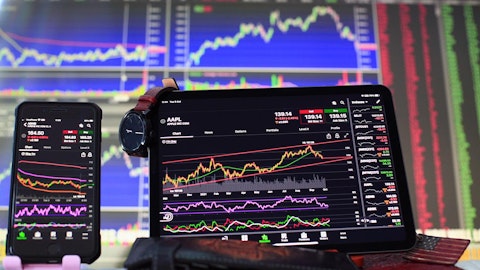In this article, we discuss the 5 stocks Australian billionaire Kerr Neilson is selling. If you want to read our analysis of Neilson’s history and investment philosophy, go directly to Australian Billionaire Kerr Neilson is Selling These 15 Stocks.
5. International Business Machines Corporation (NYSE:IBM)
Number of Hedge Fund Holders: 40
International Business Machines Corporation (NYSE:IBM) is an Armonk, New York-based technology company.
In an article published in Barron’s on September 17, senior writer Allen Root wrote that although International Business Machines Corporation (NYSE:IBM) is a cheap stock in terms of valuation, it does not deserve a place in the bargain bin. In the last 90 days, International Business Machines Corporation (NYSE:IBM) has seen 13 downward revisions in EPS estimates for Q3 2022, which is expected to be reported on October 19. Analysts anticipate the company to report revenue of $13.60 billion, which would signify a YoY decline of 22% from $17.62 billion during the same quarter last year.
St. James Investment Company shared its outlook on International Business Machines Corporation (NYSE:IBM) in its Q4 2021 investor letter. Here’s what the firm said:
“IBM was not the first company to build computers. The distinction belongs to Sperry-Rand’s subsidiary UNIVAC, which introduced the first commercially successful computers in the early 1950s. In this era, IBM did possess the largest research and development department of the business machines industry and quickly caught up, introducing cost-competitive computers a few years after UNIVAC. By the late 1950s, IBM held the dominant market share in computers. IBM also touted a vastly superior sales organization, which used a sales tactic called “paper machines” (the equivalent of today’s “vaporware”). If a competitor’s product was selling well in a market segment that IBM had yet to penetrate, the company would announce a competing product and start taking orders for the “paper machine” long before it was available.
One cannot overstate how powerful IBM was in the computer industry in the 1950s and 1960s. Every competitor rightly worried that if their product worked too well for too long, it was only a matter of
time before an army of IBM salesforce representatives mobilized. In their easily recognizable uniforms of starched white shirts, red ties and blue suits, IBM marketers marched on their customers and offered a more expensive, but much more defensible, choice. “Nobody gets fired for buying IBM” was a common phrase. Even competitors acknowledged that the company excelled at sales. As a UNIVAC executive once complained, ‘It doesn’t do much good to build a better mousetrap if the other guy selling mousetraps has five times as many salesmen.’” (Click here to see the full text)





